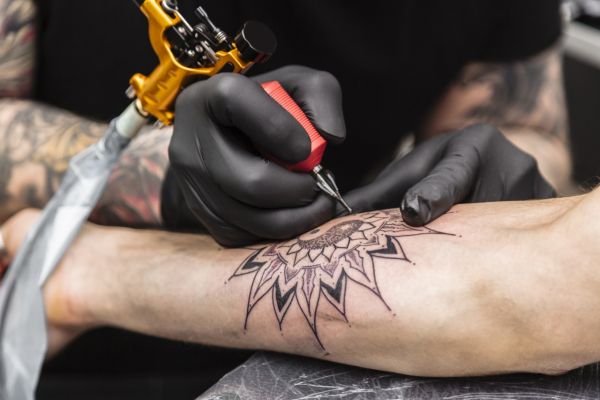Skin cancers are the most commonly diagnosed malignancies in the United States. In fact, more skin cancers will be diagnosed this year than all other types of cancer combined. Advanced skin cancers are easy to identify: because they look very different from other common skin changes.
Advanced skin cancers often present as large, slowly extending, unhealing sores; thick, tender or asymptomatic growing tumors; or sizable fast-growing black or pink bumps.
However, doctors hope not to have to diagnose these advanced skin cancers. Most skin cancers are easily treatable when diagnosed early, but if identified later, they can cause both a treatment challenge and potentially a significant health risk. To improve treatment outcomes and to reduce health risk, early skin cancer diagnosis is crucial.
The problem is that while advanced skin cancers may be obvious, early skin cancers aren’t always easy to identify.
"It can be very hard to identify a skin cancer, because hundreds — sometimes thousands — of harmless skin lesions might look unusual to the untrained eye," says Gyorgy Paragh, MD, PhD, Chair of the Department of Dermatology at Roswell Park Comprehensive Cancer Center.
"One thing that can distinguish problem spots is that they usually look uniquely different from many other spots on the skin. For example, problem spots can include melanomas or pigment cell malignancies. These are caused by the skin cells that color your skin. Everyone has banal pigment cell spots on their skin. However, most pigment cell lesions look very much alike. We can recognize potentially problematic pigment cell growths because they are often larger, have multiple colors, or may hurt, itch or show some other features that make them different compared with other lesions on the surrounding skin.
“Other unique features which can help identify problem lesions are recurrent or long-standing sores or slowly growing pink bumps that are very different from any other bumps on the skin,” Dr. Paragh says. “Keeping an eye out for these very different areas on your skin during regular skin checks may help identify potentially problematic spots well before some of the more ominous features appear."
Experts generally recommend that all adults examine their skin between once a month to once every other month to find anything suspicious. To identify problem areas early, it's helpful to look for spots that look and behave differently from everything else, sometimes called the "ugly duckling."
"In dermatology, we use the term ‘ugly duckling’ to help people recognize problem spots earlier. It generally describes pigmented lesions that are very different from anything else on the skin but can also apply to non-pigmented lesions and thus help identify potential non-melanoma skin cancers" says Dr. Paragh.
When doctors try to identify problem pigmented lesions, they recommend that people look for what they call the ABCDE features. To include the easiest-to-use ugly duckling sign, Dr. Paragh generally recommends extending these features to ABCDEFs.
What are the ABCDEFs?
- A stands for asymmetry. If you drew a line down the middle of the spot, one half would not be the same shape as the other half.
- B stands for border irregularity. The edges of the area are not sharp and clear, but ragged and different in areas of the periphery.
- C stands for color variation in the lesion. An abnormal mole or spot contains multiple different colors, ranging from tan, brown or black to white, red or even blue. A normal pigment cell birthmark or mole usually is uniformly colored or has two shades of a color arranged regularly, one shade in the center and one on the periphery symmetrically.
- D stands for increased diameter. The abnormal spot is wider than the top of a pencil eraser — more than 6 mm in diameter.
- E stands for evolution. Over weeks or months, the spot has grown, changed shape or color, or changed in texture or internal structure.
- F is for "funny or funky," says Dr. Paragh. " 'F' really stands for the ‘ugly duckling’ sign, which tells you to watch out for anything that looks very different from anything else on your skin,” he adds. “Sometimes that can help you catch problem spots a lot earlier than you might be able to otherwise." This highlights the importance of considering lesions which look very different from other lesions, even if they do not fulfil the above criteria.
What is melanoma?
Find out more about melanoma how how it differs from other types of skin cancer.
Learn MoreIdentifying basal cell carcinomas and squamous cell carcinomas
There are two main categories of non-melanoma skin cancers: basal cell carcinomas, which are the most common, and squamous cell carcinomas, the second most common.
Before they become large, obvious cancers, "Basal cell carcinomas tend to be small, pink macules or papules — small, flat areas or minimally bumpy areas on the skin that can at times look bright pink or occasionally are pearly white," Dr. Paragh says.
One other sign of basal cell carcinomas is that they may frequently break open and can bleed or, at times, can be covered by a scab. Seemingly out of nowhere, a tiny open sore or wound may appear. The lesions may even look as if they healed at times, but the same spot will reopen and become a sore again.
"For basal cell carcinomas, people should look for small recurrent sores, areas that break open easily, areas that bleed easily, and pearly or pink bumps on the skin that continue to grow very slowly. Occasionally basal cell carcinomas may also show up as a small scar-like change on the skin in an area with no prior trauma,” Dr. Paragh says. "As opposed to normal scars, these scar-like basal cell carcinomas will spontaneously grow, but very slowly." Later "larger ulcerations with rolled borders, can also appear and show up as a more ominous sign of basal cell skin cancers."
Most squamous cell carcinomas tend to look different from basal cell carcinomas. They may show up as pink, rough patches of skin. The area may be asymptomatic but at times, may also be itchy or tender. In some cases, people also may see a warty bump on the skin that continues to grow over time.
Although all these features are relevant and can be used to identify potentially concerning skin lesions, for the untrained eye "the 'ugly duckling' " sign is usually the best way to recognize suspicious skin lesions and catch skin cancer early, he says.



